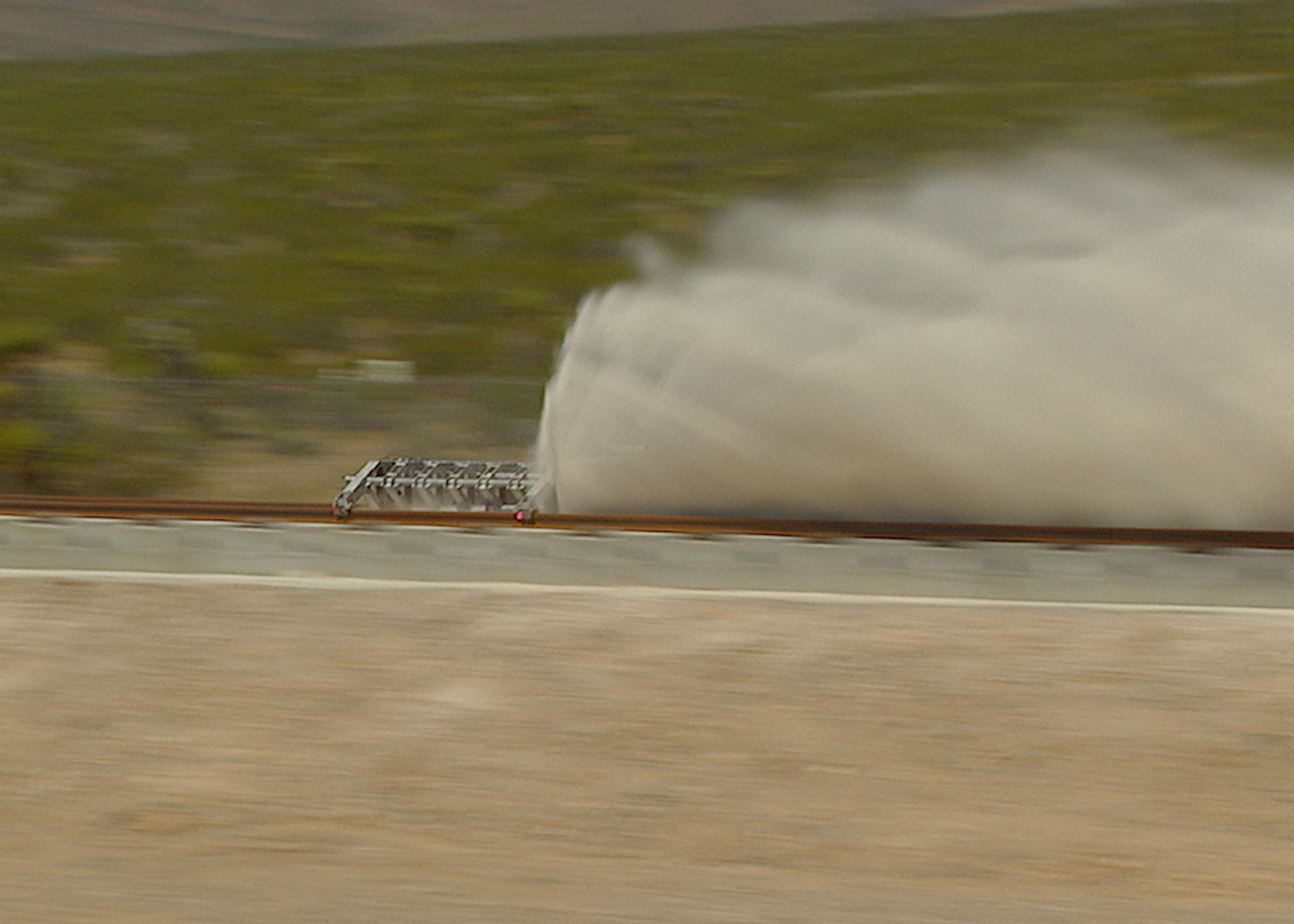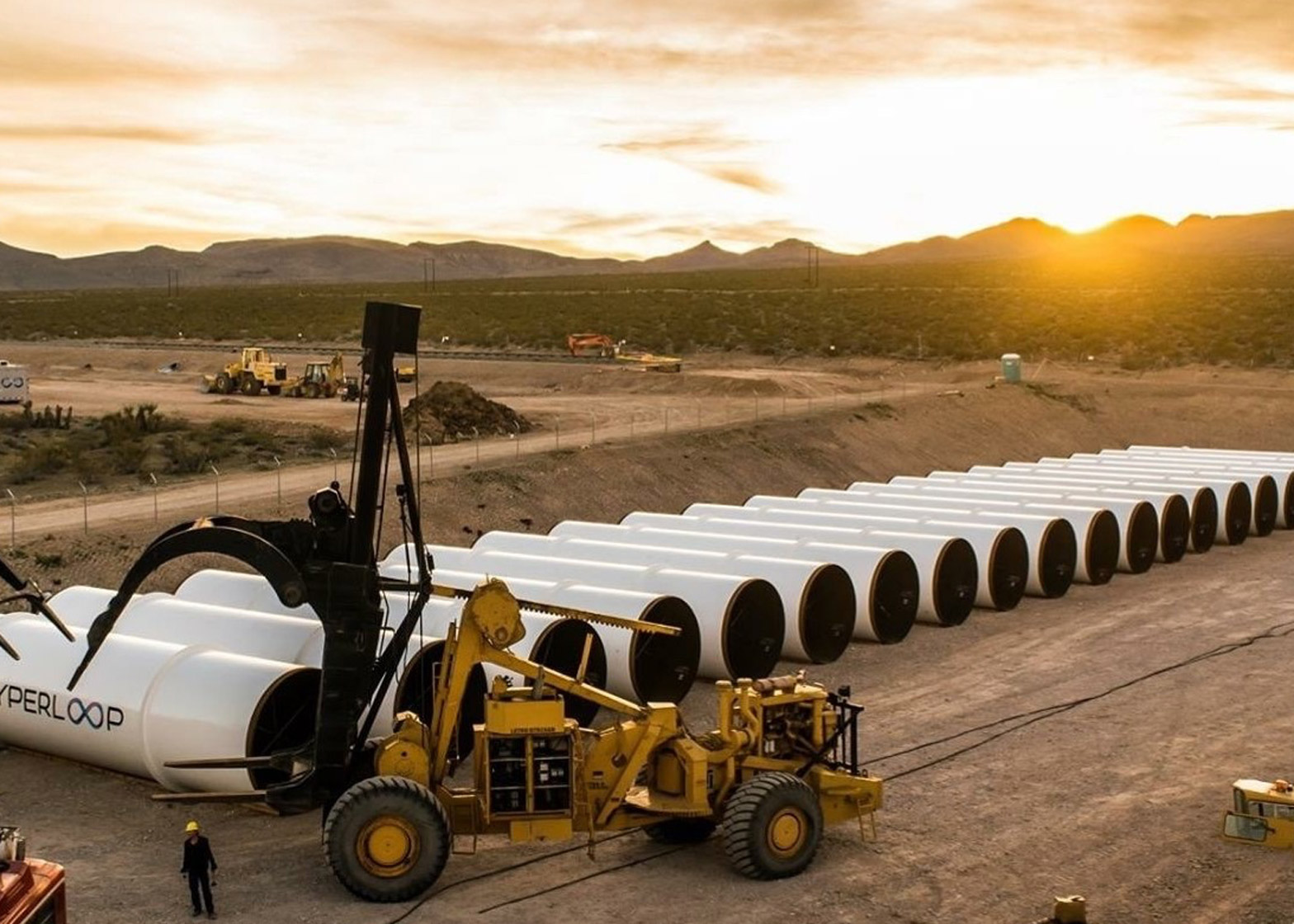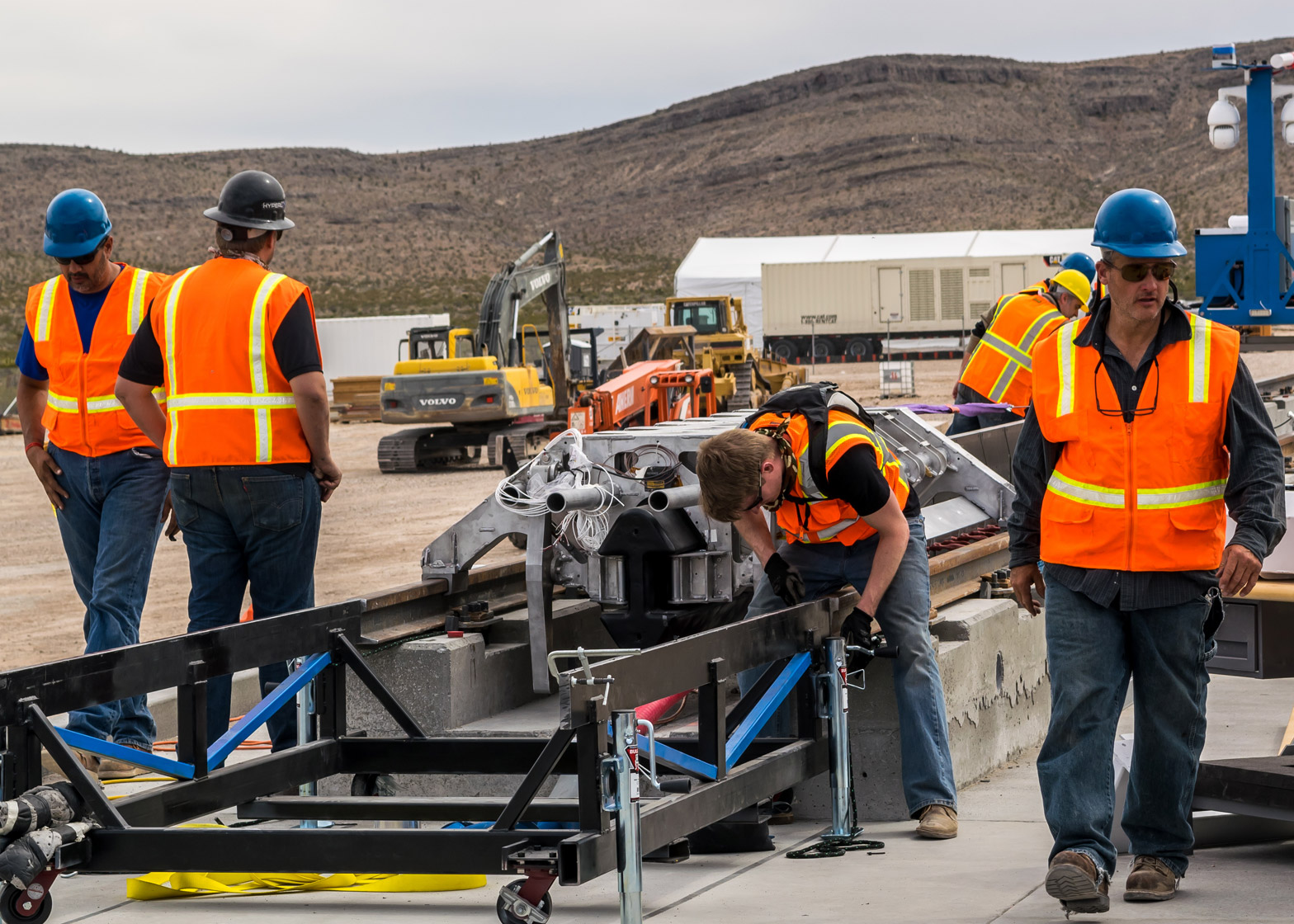Hyperloop could completely transform how cities are planned says Bjarke Ingels
Bjarke Ingels's firm has been announced as one of the architectural partners that will help build infrastructure for the Hyperloop high-speed transportation system, in the same week as the latest test of its propulsion technology (+ movie).
Entrepreneur Elon Musk's vision for the Hyperloop high-speed transportation system came closer to being realised on Wednesday after the first full-scale, open-air test of its propulsion technology reached speeds of 187 km/h in 1.1 seconds.
Taking place in the Mojave desert, 35 miles north of Las Vegas, the test was conducted by Hyperloop One (formerly Hyperloop Technologies), which is one of several companies independently developing the technology after the early plans were open sourced by Musk and his company SpaceX.
Hyperloop One also announced a group of creative partners – including Ingel's Danish firm BIG and engineering and architecture firms AECOM and Arup – to help turn the technology into infrastructure.

"Traditionally, the work of an architect is to design buildings for the same known program – a residence or a workplace – and try to squeeze in a marginal improvement here or an elegant design solution there," said Bjarke Ingels.
"With Hyperloop we are not only designing a futuristic station or a very fast train, we are dealing with an entirely novel technology with the potential to completely transform how our existing cities will grow and evolve – and how new cities will be conceived and constructed."
The idea behind the Hyperloop is to create a super high-speed connection between major cities that could significantly reduce both journey times and pollution from commuting via air or road.

This involves propelling an air-cushioned capsule at high speed through a reduced-pressure tube that operates as a partial vacuum. It was theorised the capsules could reach near-supersonic speeds of 1,200 kilometres per hour.
Wednesday's test was a trial of Hyperloop One's linear induction propulsion system on metal rails. The finished system will introduce magnets into the design, using them to levitate the capsules within their tubes.
"There are many engineering milestones to bring Hyperloop to reality, and this is one of the bigger, more tangible ones," said Hyperloop One co-founder and chief technology officer Brogan BamBrogan in a video released by the company.
"We've developed a custom propulsion system, and we built a very specific test to showcase the trajectory we're on, which is to build a lot of hardware and absolutely prove to everyone that Hyperloop is coming, and coming very soon."

The founder of Tesla Motors, Paypal and space exploration company SpaceX, Musk first unveiled the concept for Hyperloop in 2013 and developed it through SpaceX. He then open-sourced the technology and is no longer directly involved in its development.
Although Hyperloop One is not the only company in the race to build the Hyperloop, this test edges them into the lead.
"We're the first to achieve the commercialisation at scale, we're the first to actually take this technology to the level that its at today, and we want to be the first to build hyperloop around the world," said chief executive officer Rob Lloyd.
"I think we're going to surprise the world how quickly we're going to move from this test, which is impressive enough, to the full-scale test."
A video demonstrating the test of Hyperloop One
Hyperloop One's main competitor is Hyperloop Transportation Technologies, who are currently building a test track in California and who are already in discussions to build Hyperloops between the European cities of Budapest, Vienna and Bratislava.
Speaking to the International Business Times, Hyperloop Transportation Technologies chief executive officer Dirk Ahlborn said the Hyperloop had become a "truly global movement".
Photography is by Joshua Caldwell.